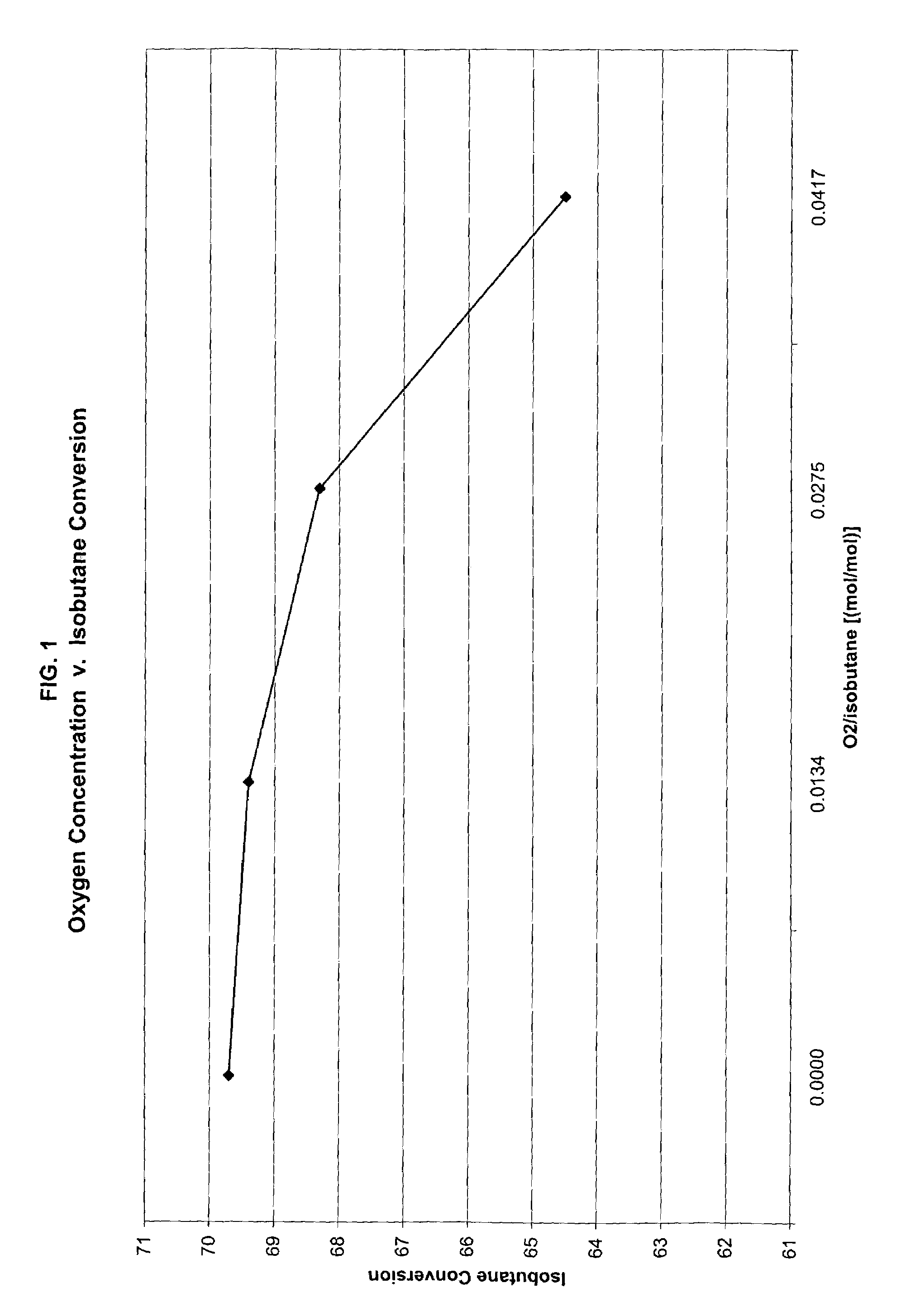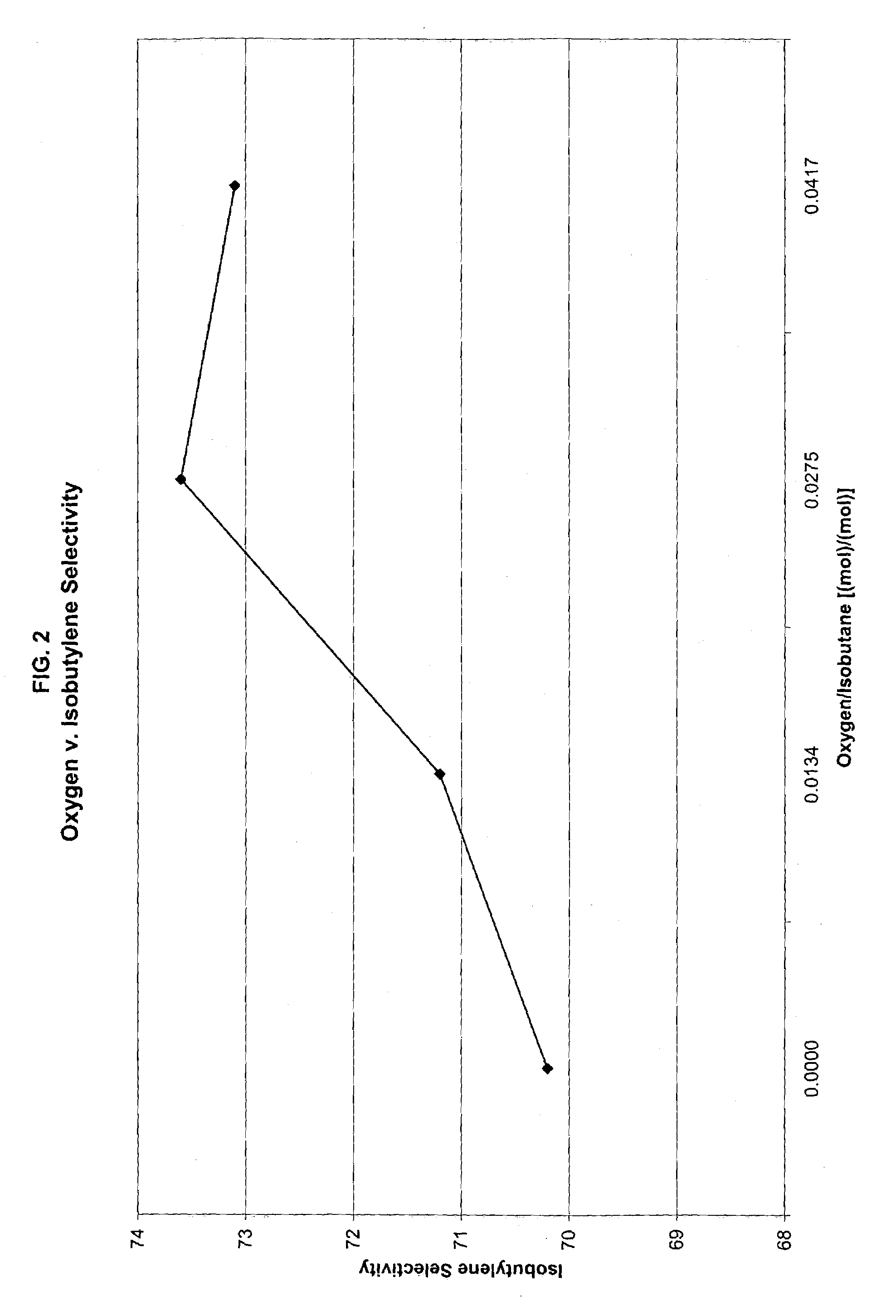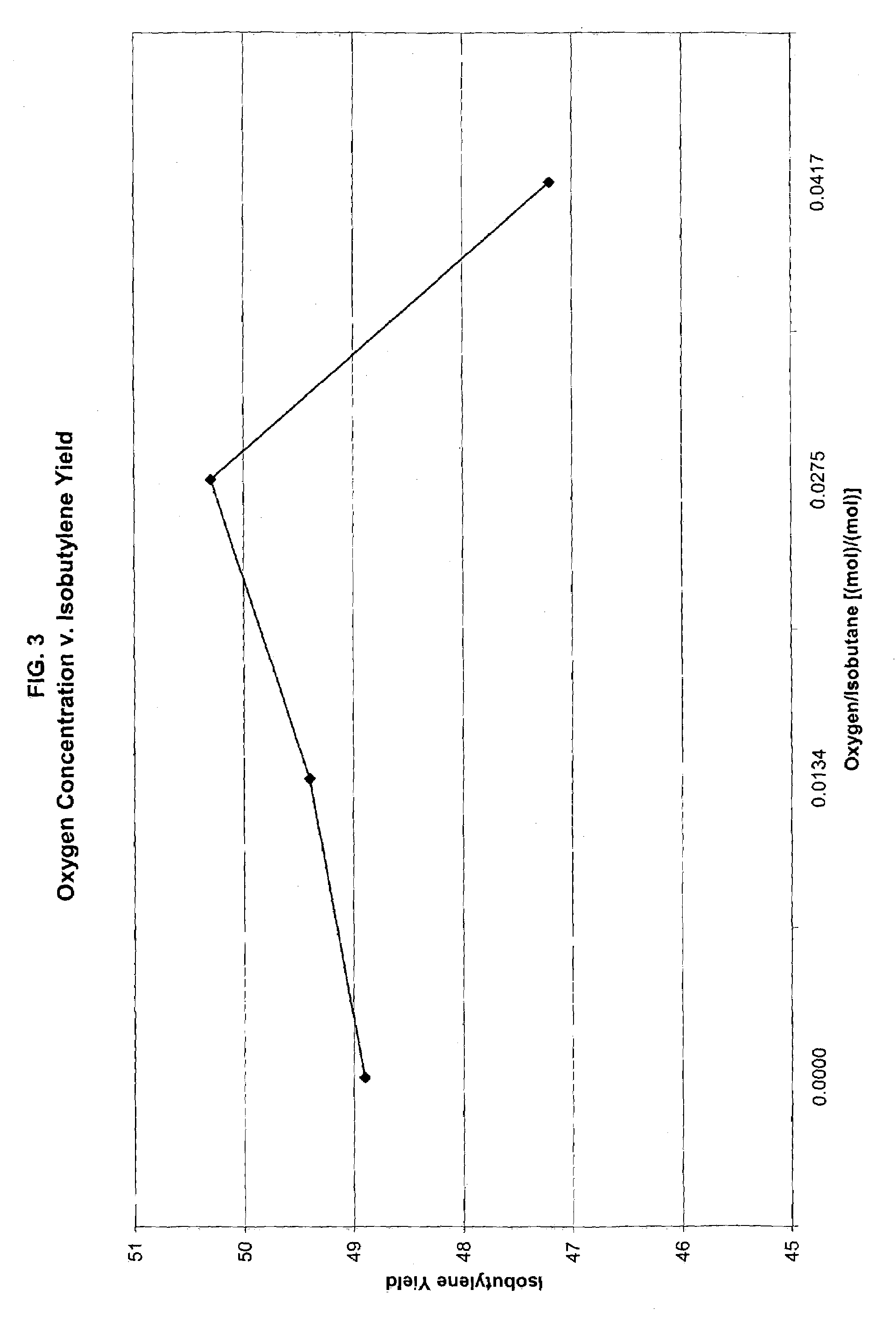Dehydrogenation process for olefins
a dehydrogenation process and olefin technology, applied in the field of dehydrogenation process of olefins, can solve the problems of thermal cracking, low alkene selectivity, and inability to meet the demand cost effectively, and achieve high paraffin conversion, increase olefin yield and selectivity, and reduce thermal cracking
- Summary
- Abstract
- Description
- Claims
- Application Information
AI Technical Summary
Benefits of technology
Problems solved by technology
Method used
Image
Examples
examples
[0042]The invention will now be more fully described and understood with reference to Example 1 through 9. These examples are given by way of illustration and the claimed invention is not limited by these examples.
[0043]The catalyst used in the following examples is a commercially available chromium-alumina based dehydrogenation catalyst containing 14% chromium and manufactured by spray dryer method (catalyst T-2715 from United Catalyst, Inc.).
[0044]Five or one gram of the catalyst was loaded in a standard SS fixed bed reactor constructed of a 1-inch tube. A ⅛ inch thermowell was located axially in the reactor tube to enable temperature measurement. The reactor was placed in an oven heated electrically for maintaining the desired temperature. The reactor effluent was directed to an on-line connected GC HP 6890 provided with FID and TCD detectors. Nitrogen was introduced into the reactor effluent at constant rate to provide an internal standard for accurately calculating the mass bal...
PUM
| Property | Measurement | Unit |
|---|---|---|
| pressure | aaaaa | aaaaa |
| temperature | aaaaa | aaaaa |
| temperature | aaaaa | aaaaa |
Abstract
Description
Claims
Application Information
 Login to View More
Login to View More - R&D
- Intellectual Property
- Life Sciences
- Materials
- Tech Scout
- Unparalleled Data Quality
- Higher Quality Content
- 60% Fewer Hallucinations
Browse by: Latest US Patents, China's latest patents, Technical Efficacy Thesaurus, Application Domain, Technology Topic, Popular Technical Reports.
© 2025 PatSnap. All rights reserved.Legal|Privacy policy|Modern Slavery Act Transparency Statement|Sitemap|About US| Contact US: help@patsnap.com



